ISSN ONLINE(2319-8753)PRINT(2347-6710)
ISSN ONLINE(2319-8753)PRINT(2347-6710)
A.Arunkumar1, T.Prabaharan2
|
| Related article at Pubmed, Scholar Google |
Visit for more related articles at International Journal of Innovative Research in Science, Engineering and Technology
Surface finish is one of the prime requirements of customers for machined parts. In most of machining operations the main objective is optimization of surface roughness. The higher value of surface roughness generates on the machining parts and due to rework or scrap results into increase in cost and loss productivity. Surface roughness is major factor in modern CNC turning industry. The purpose of this work is focused on the analysis of optimum cutting conditions to get lowest surface roughness in turning by regression analysis. To investigate the effect of cutting parameter like spindle speed, feed rate and depth of cut on surface finish on Polyphenylene sulphide with 40% glass fiber (PPS),the experiments have been conducted using L9 orthogonal array in Minitab 16.0 software. Machining was done using diamond insert and measured the surface roughness by using Surfcom 130A.Multiple regression modeling was performed to predict the surface roughness by using machining parameter. Comparison between experimental values and predict values is carried out. The objective was to establish relation between cutting speed, feed rate and depth of cut and optimize the turning conditions based on surface roughness. These correlations are obtained by multiple regression analysis.
Keywords |
| Turning, PPS, Diamond insert, Surface roughness; Minitab 16.0, Regression Analysis. |
INTRODUCTION |
| Many manufacturing industries involve machining operations. In metal cutting, the turning process is one of the most fundamental cutting processes. Turning is the machining operation that produces cylindrical parts. Quality of surface finish is one of the most important requirements in industries. Surface roughness is considered as a one of the performance measurements Surface roughness depends on following parameters cutting speed, depth of cut, feed rate. Regression analysis with help of Minitab 16.0 software is used, it is able to calculate predict values for responses in comparison between experimental values and predicted values. |
II. LITERATURE REVIEW |
| In A. Kobayashi [1] a plastic has been widely employed in the industrial sector due to the need of high dimensional accuracy and good surface finish, components of plastic for these ends should be produced by means of machining processes instead of moulding processes |
| G. GloboÃâÃÂki LakiÃâÃâ¡ [2] In many cases, the plastic machining now in use is simply the result of know-how gained from previous experience. In addition, most machining methods depend on the use of existing machines and tools developed for the fabricator of wood and metals, and little has been done to develop cutting equipment or methods especially suited to plastics. Thus, it has been rather difficult to machine all plastics successfully, owing to the many kinds and grades of plastics available and the lack of a basic understanding of their inherent machinability. |
| Roberts AT [3] Although CFRPs present numerous advantages, their increasing use also generates an increasing amount of waste, including out-of date prepregs, manufacturing cut-offs, testing materials, production tools and end-of-life components |
| Sardinas.R.Q [4] a multi-objective optimization technique, based on genetic algorithms. In any optimization procedure identifying the output parameter is of chief important. Many of authors have determined the optimization in single objective approaches only and it has limited value to fix optimal cutting conditions. The objectives are maximization of tool life and maximization of production rate using genetic algorithm method. The proposed genetic algorithm was implemented in C++. By using of Pareto frontier graphics, several different situations may be considered, facilitating the choice of right parameters for any condition. The proposed micro- GA has obtain several, uniformly distributed points, in order to arrange the Pareto front, at a reasonably low computational cost. Cost analysis can complement the Pareto front information, and it helps the decision-making process. |
| K. Arun Vikram and Ch. Ratnam [5] investigated the effect of machining parameters on surface roughness in hard turning process for three different materials like EN8 steel, Aluminium alloy and Copper alloy under dry conditions. Three parameters like cutting speed, feed and material hardness used during their experimental studies. Empirical model for surface roughness developed with help of MINITAB software by means of nonlinear regression data mining method done in MINITAB |
| Srikanth.T [6] real coded genetic algorithm optimization of machining parameters in order to obtain better surface quality. Since, surface quality is one of the important indicators of customer requirement in machining process. There are various methods available for optimization problems like calculus based, dynamic programming, artificial neural network, simulated annealing, etc. the authors concluded from experimental analysis that surface roughness decreases with increase in cutting speed and decrease in feed rate |
| E. Eriksen [7] examined the influence of cutting parameters (feed rate, cutting speed and tool nose radius) and the fibre orientation on the surface roughness in turning of short fiber reinforced thermoplastic. The results showed that the roughness of the machined surfaces was highly influenced by the feed rate and tool nose radius, whereas the influence of cutting speed was negligible. |
| V. N. Gaitonde [8] In addition to the surface finish quality, the material removal rate (MRR) is also an important characteristic in turning operation and high MRR is always desirable. Optimization of a single response results the non-optimum values for remaining responses. In solving many problems in engineering, it is necessary to consider the application of multi-response optimization, because the performance of the manufactured products is often evaluated by several quality characteristics/ responses. Though the Taguchi approach is used for a single response problem, most of the researchers proposed various methods for multiresponse problem by modifying it |
| Raj et al. [10] developed a new type called improved genetic algorithm (IGA) to calculate the ideal parameters for estimating the surface quality. Cutting parameters used are nose radius speed, feed, and depth of cut. In this work, Taguchi's orthogonal array method is used to achieve the experiment of dry turning of SS 420 work piece. This method combines stochastic crossover technique and an artificial initial population to provide faster search mechanism to avoid the local optimal trap. The author concluded that this algorithm is more effective than conventional genetic algorithm (CGA). |
III. PROBLEM DESCRIPTION |
| Particularly in the field of transport engineering massive application of lightweight materials represents the order of the day. The goal of saving fuel and other energy forms can mainly be achieved through the reduction of vehicle weights. Apart from various synthetic materials, the classical light metal Aluminium offers the best pre-requisite for reaching this objective but Polymer polyphenylene sulphide is used instead of material. The use of Polymer polyphenylene sulphide in aircraft construction makes it possible to reduce component weight. With Polymer polyphenylene sulphide, modem aircraft construction has the opportunity to replace metal with plastic, even in applications with demanding materials specifications. Polymer polyphenylene sulphide will be the matrix for the extremely light and robust composites used for the wing leading edge nose of the new A380. Composites based on Polymer polyphenylene sulphide are now used for numerous applications in aircraft construction, including the ailerons and the keel beam of the aircraft. The composites are produced at about 300°C under high pressure from Polymer polyphenylene sulphide films and fibrous reinforcing materials. Polymer polyphenylene sulphide composites also made it possible to change the profile of the parts The identification of turning problem for polyphenylene sulphide composite rods which cannot be tackled using conventional technique because of following problems occurs in turning process |
| ïÃâ÷ High surface roughness. |
| ïÃâ÷ Difficult to achieve Close tolerance. |
| ïÃâ÷ Machining distortion. |
| ïÃâ÷ Poor Chip Breaking. |
| ïÃâ÷ Need more cutting pressure for machining. |
| ïÃâ÷ Need high hardness cutting tool for machining. |
| The above problems have to be overcome during turning process and achieve good surface finish and close dimensional accuracy by using optimization techniques. |
IV. EXPERIMENTAL PROCEDURE |
A. Experimental Setup |
| The material and tool are selected based on the problem identification study. |
| Machine tool : CNC Lathe |
| Work material : Polyphenylene sulphide |
| Cutting tool : Diamond tip tool |
B. For Experimental Work |
| ïÃâ÷ The material and tool are selected based on the problem identification study. |
| ïÃâ÷ To achieve surface roughness minimize by following parameters |
| ïÃâ÷ Cutting speed, |
| ïÃâ÷ Feed rate, |
| ïÃâ÷ Depth of cut, |
| ïÃâ÷ Measuring surface roughness using surface roughness tester. |
| ïÃâ÷ The experimental design using the Taguchi method. |
C. Design of experiment |
| The design of experiment technique is a vital tool, which allows us to carry out the modeling and analysis of the influence of input process variables on the response. In the present study, the controllable turning parameters such as cutting speed, feed rate ,depth of cut are consider as design of factors. The range of values of each factor was set at three different levels based on available machining data on from hand books |
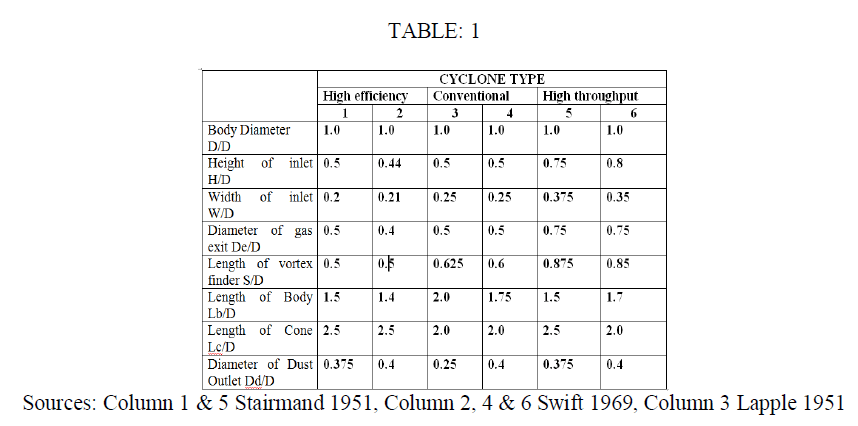 |
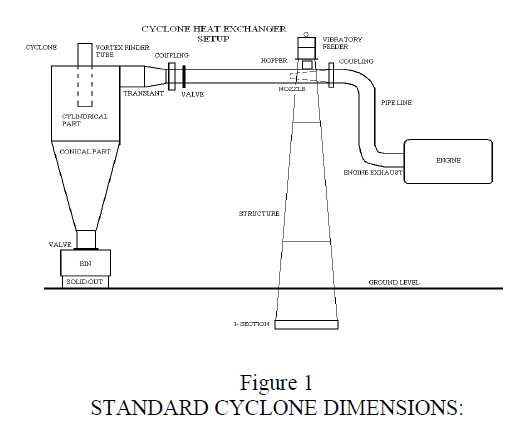 |
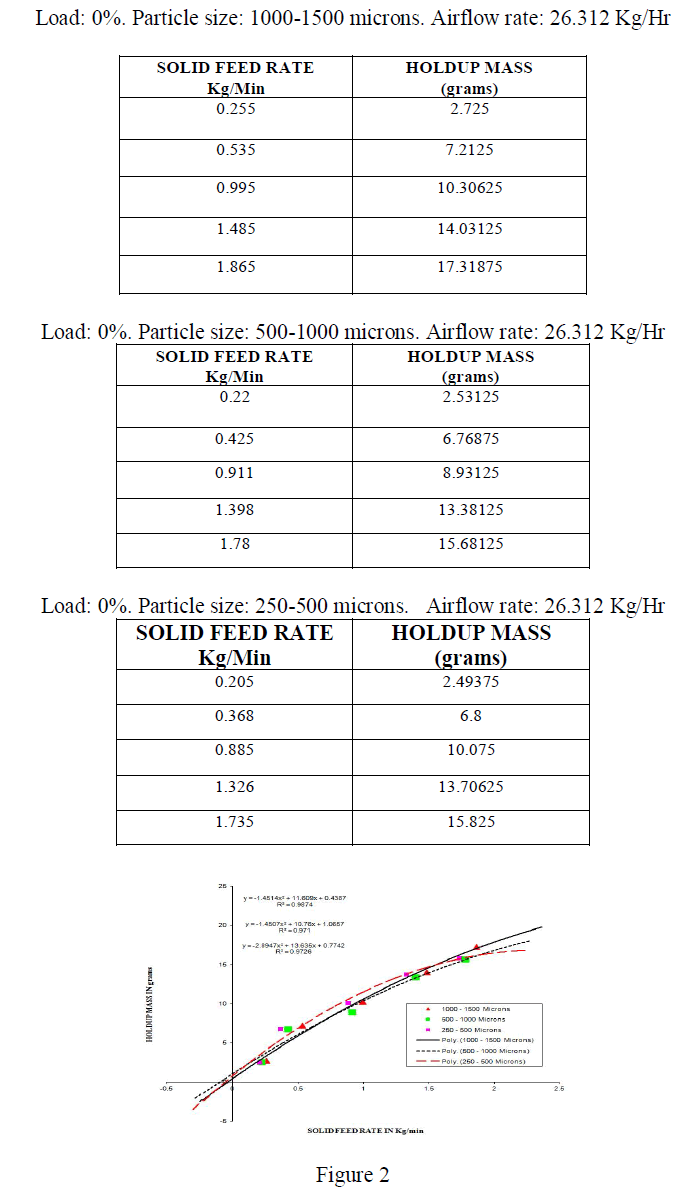 |
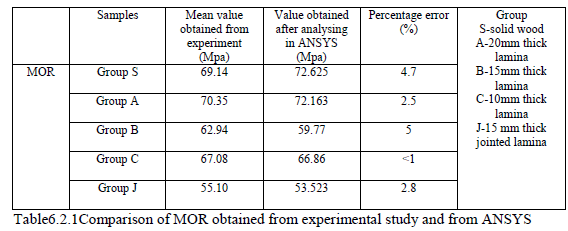 |
 |
V. RESULT |
A. Regression Analysis |
| Regression analysis is used to investigate and model the relationship between a response variable and one or more predictors. Minitab 16.0 provides least square, partial least square and logistic regression procedure. |
| The regression equation is C4 = - 0.921 - 0.000320 C1 + 31.9 C2 - 0.56 C3 |
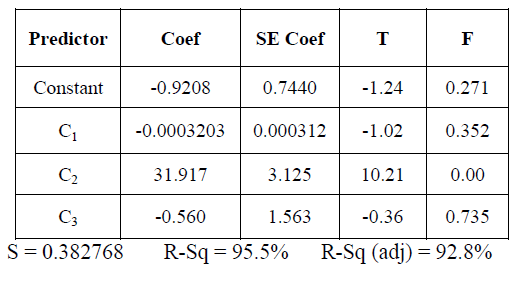 |
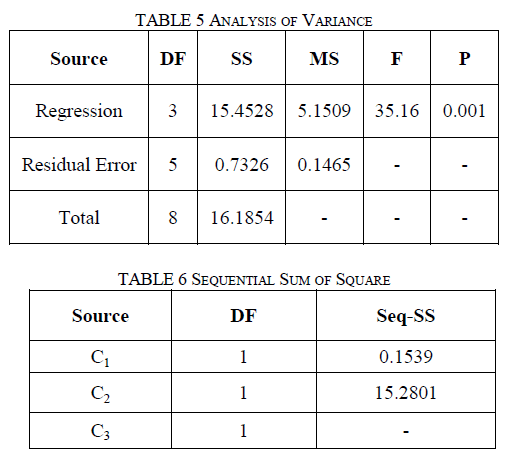 |
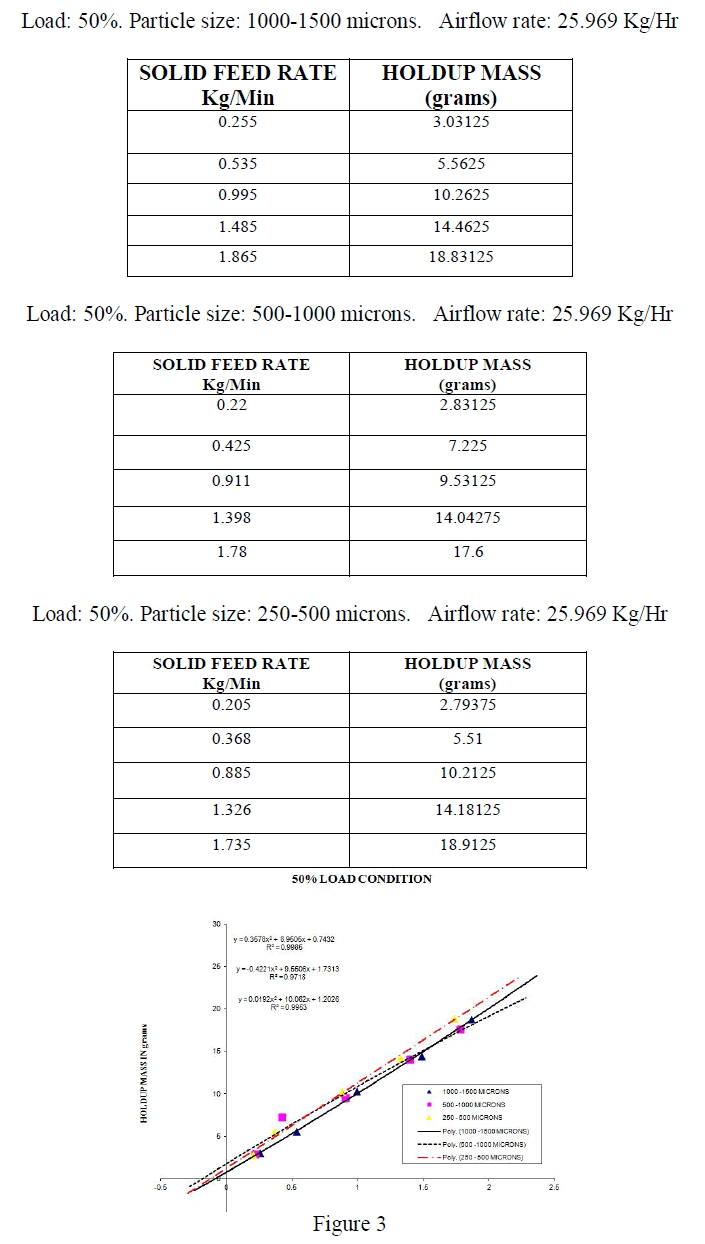 |
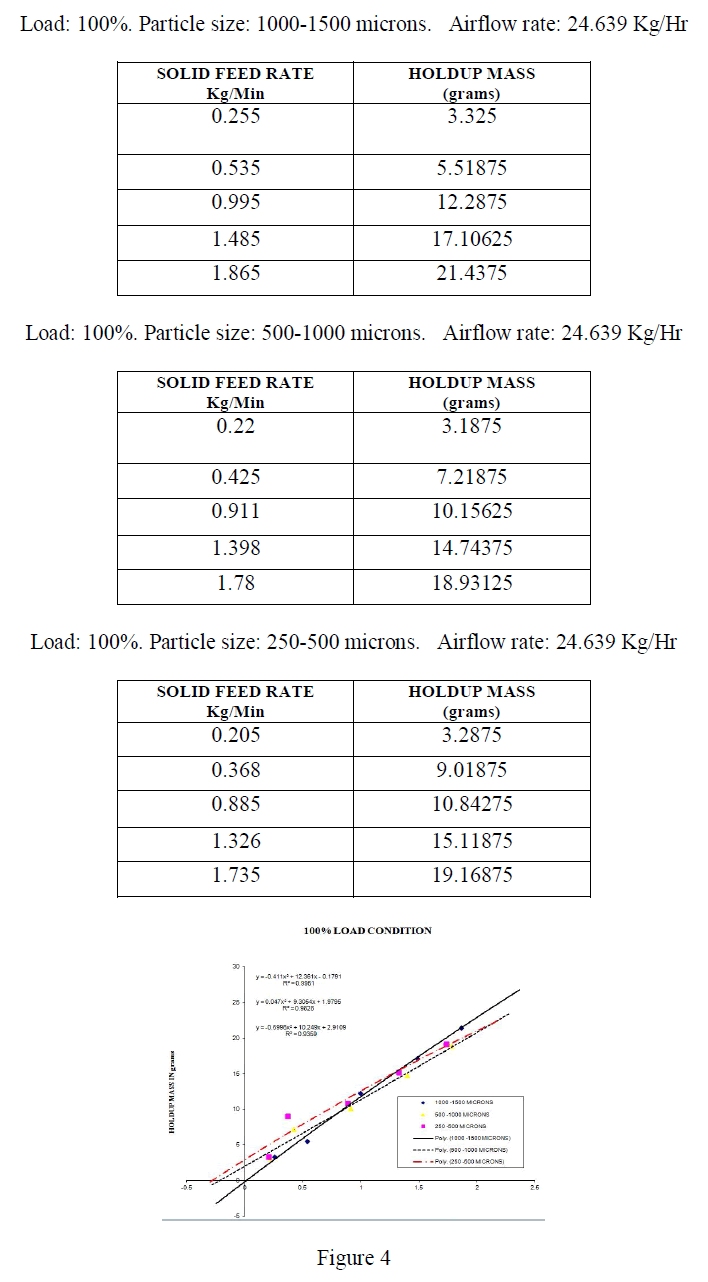 |
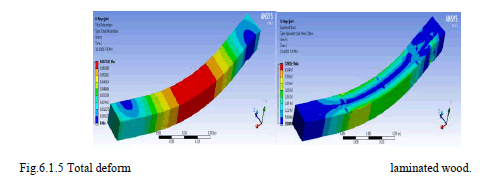 |
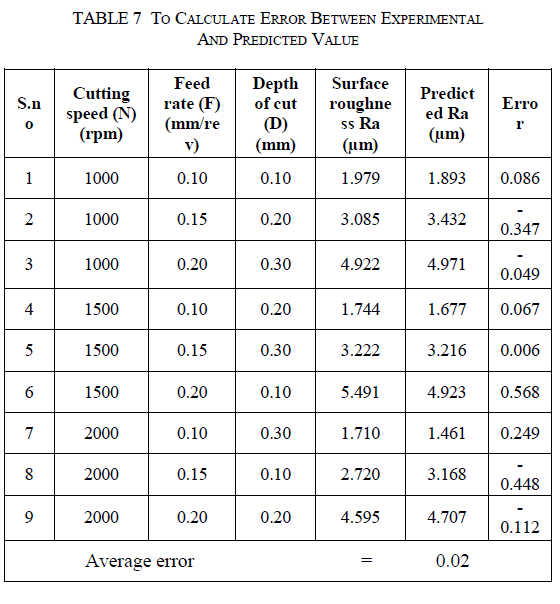 |
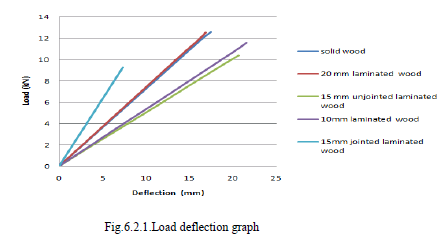 |
VI. CONCLUSION |
| In this work the effect of machining parameters speed, feed, depth of cut, are studied on surface roughness for turning operation. Regression Analyses (RA) technique is used to study the effect of these parameters and their interaction on surface roughness. An empirical equation is formed by using Regression Analyses (RA) in Mini-Tab software to predict the surface roughness. The surface roughness model produced during this research work may be used in enhancing the surface quality of a product as cutting parameters are optimized and can give better surface finish. Experiment value and predict value of surface roughness both values are minimum error 0.02 value. Graphs that show difference between experiment value and predict surface roughness value are almost same. |
ACKNOWLEDGEMENTS |
| The authors would like to thank the department of mechanical engineering, Mepco Schlenk Engineering College Sivaksi, for carry out this project work. |
References |
|